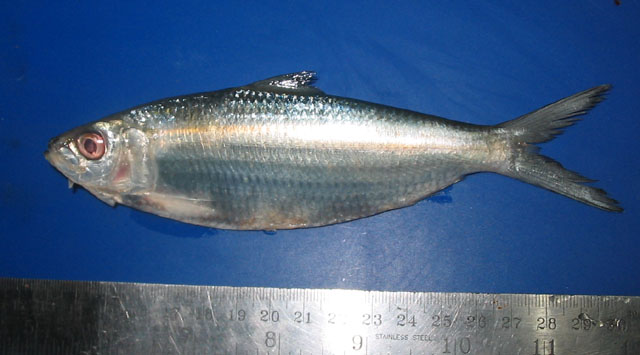| Dorosomatidae (Gizzard shads and sardinellas) |
| 19 cm TL (male/unsexed) |
|
pelagic-neritic; brackish; marine; depth range 0 - 50 m |
| Indo-West Pacific: from Kuwait to southern India and Bay of Bengal to the Philippines, also eastern tip of Papua New Guinea. Often confused with Sardinella gibbosa in Indian waters. |
|
Dorsal spines (total): 0-0; Dorsal soft rays (total): 18-19; Anal spines: 0-0; Anal soft rays: 18-20. This species is distinguished by the following characters: deep body, its depth 28·0-33·2% SL; interrupted longitudinal striae formation in lateral scales; scutes prepelvic and post-pelvic 17-18 + 11-12, respectively, oftern 18 + 12; A 18-20 rays, usually 19; lower gill rakers 65-81 (Ref. 114969). |
| Forms schools in coastal waters. Misidentifications (especially with S. gibbosa in Indian waters and S. albella in the western Indian Ocean) make published biological data potentially unreliable. Marketed fresh, dried-salted, boiled or made into fish balls. |
|
Least Concern (LC); Date assessed: 02 March 2018 Ref. (130435)
|
| harmless |
Source and more info: www.fishbase.org. For personal, classroom, and other internal use only. Not for publication.

